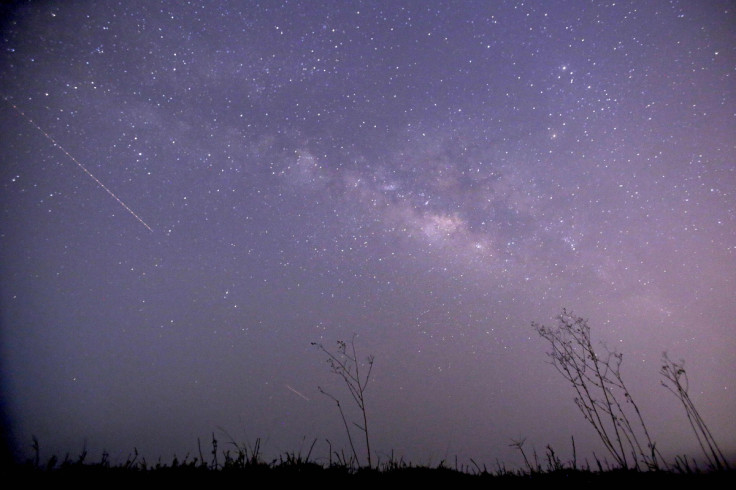Lyrid meteor shower 2017: How to look at spectacular 'shooting stars' passing by in night sky
The Lyrid meteor shower will peak on 22 April at dawn.

From now until 25 April, stargazers who observe the night sky may be able to get a good view of the Lyrid meteor shower. The best time to spot the dusty comet trail however will be on April 22, just before dawn.
The Lyrid meteor shower is among the oldest to have been recorded. Lyrids have been observed for more than 2,600 years. They are pieces of debris from the periodic Comet C/1861 G1 Thatcher which can be seen from Earth each year from mid-April, as the planet runs into the stream of debris from the comet.
Comet Thatcher orbits the sun about once every 415 years. Its most recent closest approach to the sun was in 1861 and it won't be back until 2276.
A typical Lyrid meteor shower produces 15 to 20 meteors per hour but in some years, the shower intensifies. Up to 100 meteors an hour can then be seen. This is called an "outburst" and astronomers usually struggle to predict when they occur.
In 1982, nearly 100 Lyrids were observed every hour in the US. Sixty years before, a similar number were seen in Greece.
How can I see the Lyrid Meteor shower?
Viewers can tell if a meteor belongs to a particular shower by tracing back its path to see if it originates near a specific point in the sky, called the radiant. In the case of the Lyrid meteor shower, Lyrids appear to originate from a radiant in the Lyra constellation.
This constellation is located to the north-east of Vega, one of the brightest stars that you can spot in the night sky, at this time of year.
The fact that the new moon won't come until 26 April should help stargazers see the shower as the moonlight won't obstruct the view of the meteors as they pass through across the sky. Last year, the Lyrid meter shower wasn't too remarkable as it coincided with the full moon.
The Lyrid meteor shower is of medium brightness, and can usually be seen quite well. However, it is not as bright as the Perseid meteor shower which occurs annually in August.
© Copyright IBTimes 2025. All rights reserved.






















